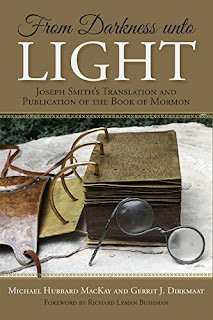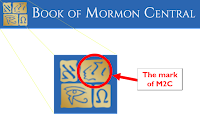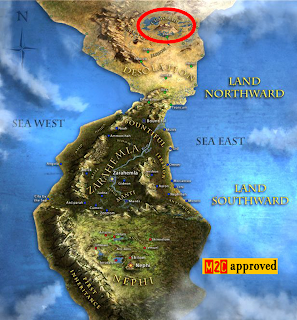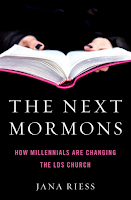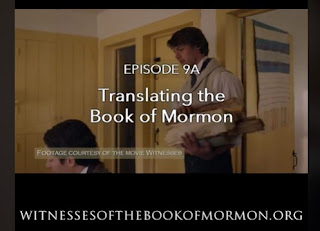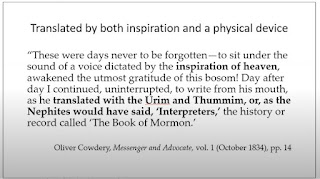Answering My Gospel Questions class
I know you readers are all eager for the next part of the series on From Darkness Unto Light (and it’s awesome), but I’m delaying it by a day because the new Religion 280 class has been in the news a bit. I mentioned it before. Here are some links.
https://www.sltrib.com/religion/2022/07/21/latest-mormon-land-class/
and
This course is another very positive development for the establishment of Zion.
Here’s a link to the teacher material:
I’d like to see this course added to the Self Reliance program along with the Emotional Resilience course, which every Latter-day Saint should take.
This class, like the Emotional Resilience class, will elevate the Latter-day Saints who take it above the logical and factual thinking errors we see among both our LDS apologists and our critics.
_____
A good example is the section “Microtraining 3, How to Assess the Reliability of Sources.”
I wish every Latter-day Saint would read and re-read this section. It articulates exactly what I’ve advocated ever since I started this blog. Like the introduction to the Gospel Topics Essays, this microtraining is the antithesis of the M2C/SITH citation cartel’s approach.
While people are free to believe whatever they want, it’s easy to assess the relative reliability of the teachings of the prophets vs. the teachings of the scholars.
No scholar alive today was present when Joseph and Oliver translated the plates, when they received the Priesthood, etc.
Section 2 below suggests we ask: “How closely connected is the author to the events being described? When a source addresses something from Church history, ask yourself how far removed the source is from the event it is discussing. Stories based on second- or thirdhand accounts are often less reliable.”
Let’s see how well SITH and M2C survive this guidance.
We have Joseph and Oliver both explaining, multiple times, that Joseph translated the record with the Urim and Thummim that came with the plates. Yet our modern scholars teach that Joseph and Oliver misled everyone because they, the modern scholars, know that Joseph actually didn’t use the plates or the Urim and Thummim but instead Joseph merely read words that appeared in the stone in the hat (SITH).
We have Oliver explaining it was a fact that Cumorah of Mormon 6:6 is in New York, we have Joseph’s mother explaining that Moroni identified the hill as Cumorah the first time he met Joseph, we have David Whitmer explaining that one of the Nephites took the abridged plates from Harmony to Cumorah, etc., but our modern scholars reject all of that. Why? Because they teach that Joseph and Oliver were ignorant speculators who misled everyone until they, our modern scholars, figured out that there were “two Cumorahs” and that the real Cumorah is somewhere in southern Mexico.
Seriously, how more obvious could this be?
In section 3 below, we read this: “Does the author intentionally ignore available evidence in order to mislead? Some authors deliberately omit important facts and ignore critical evidence to support their particular point of view.”
To promote both SITH and M2C, our modern scholars deliberately omit important facts and ignore critical evidence to support their points of view. We’ve seen how the book From Darkness Unto Light does this, and the next installment will provide more examples. The citation cartel consistently omits evidence that contradicts M2C and SITH. Even the Gospel Topics Essay on translation omits what Joseph and Oliver said about the translation in favor of the theories of the scholars who wrote the essay.
_____
As the principles of this new course permeate LDS culture, we will see a lot of new approaches to Church history and other topics. More and more Latter-day Saints will see that the evidence supports and corroborates the teachings of the prophets.
Who knows? Maybe even our scholars will someday value the teachings of the prophets over their own theories.
Patrick Mason was quoted in the article. He made a good point, but it’s a bit self-congratulatory, seeing that he’s a professional historian himself.
Sources are key. Patrick Mason, head of Mormon history and culture at Utah State University, recently told The Salt Lake Tribune that those researching church history, for instance, should stick with primary sources and the work of professional historians.
“Go look at the original stuff and make your own judgments,” he said. “Don’t just rely on what somebody on the internet happened to say about it.”
To the extent professional historians provide access to primary sources, they’re awesome. But to the extent they present their opinions as fact, they’re counterproductive. I discussed a significant example here:
https://www.academia.edu/67756647/Agenda_driven_editorial_content_in_the_Joseph_Smith_Papers
_____
Here’s the link to microtraining 3.
How to Assess the Reliability of Sources
Define
Display the following statement by President Dallin H. Oaks of the First Presidency:
We live in a time of greatly expanded and disseminated information. But not all of this information is true. We need to be cautious as we seek truth and choose sources for that search. (Dallin H. Oaks, “Truth and the Plan,” Ensign or Liahona, Nov. 2018, 25)
Model
Provide students with the following handout, and discuss how these questions can help us identify reliable sources.
Questions for Evaluating Sources
Answering My Gospel Questions—Microtraining 3: How to Assess the Reliability of Sources
-
What are the qualifications, intentions, and possible biases of the author?
President Dallin H. Oaks of the First Presidency taught that we should “be cautious about the motivation of the one who provides information. … Our personal decisions should be based on information from sources that are qualified on the subject and free from selfish motivations” (Dallin H. Oaks, “Truth and the Plan,” Ensign or Liahona, Nov. 2018, 25).
-
How closely connected is the author to the events being described?
When a source addresses something from Church history, ask yourself how far removed the source is from the event it is discussing. Stories based on second- or thirdhand accounts are often less reliable.
-
Does the author intentionally ignore available evidence in order to mislead?
Some authors deliberately omit important facts and ignore critical evidence to support their particular point of view.
-
Are the teachings and events addressed in this source presented in the proper context of their time, place, and circumstance?
Some teachings and historical events can become confusing when they are taken out of the context of their time and place. Historical context also includes other events happening at the time (such as wars, economic crises, and social and political movements) and the culture and demographics of a given time and setting.
-
Are the teachings and events supported by additional reliable sources?
Support from other reliable sources helps establish the accuracy of doctrine and historical events.
© 2022 by Intellectual Reserve, Inc. All rights reserved.
Source: About Central America

